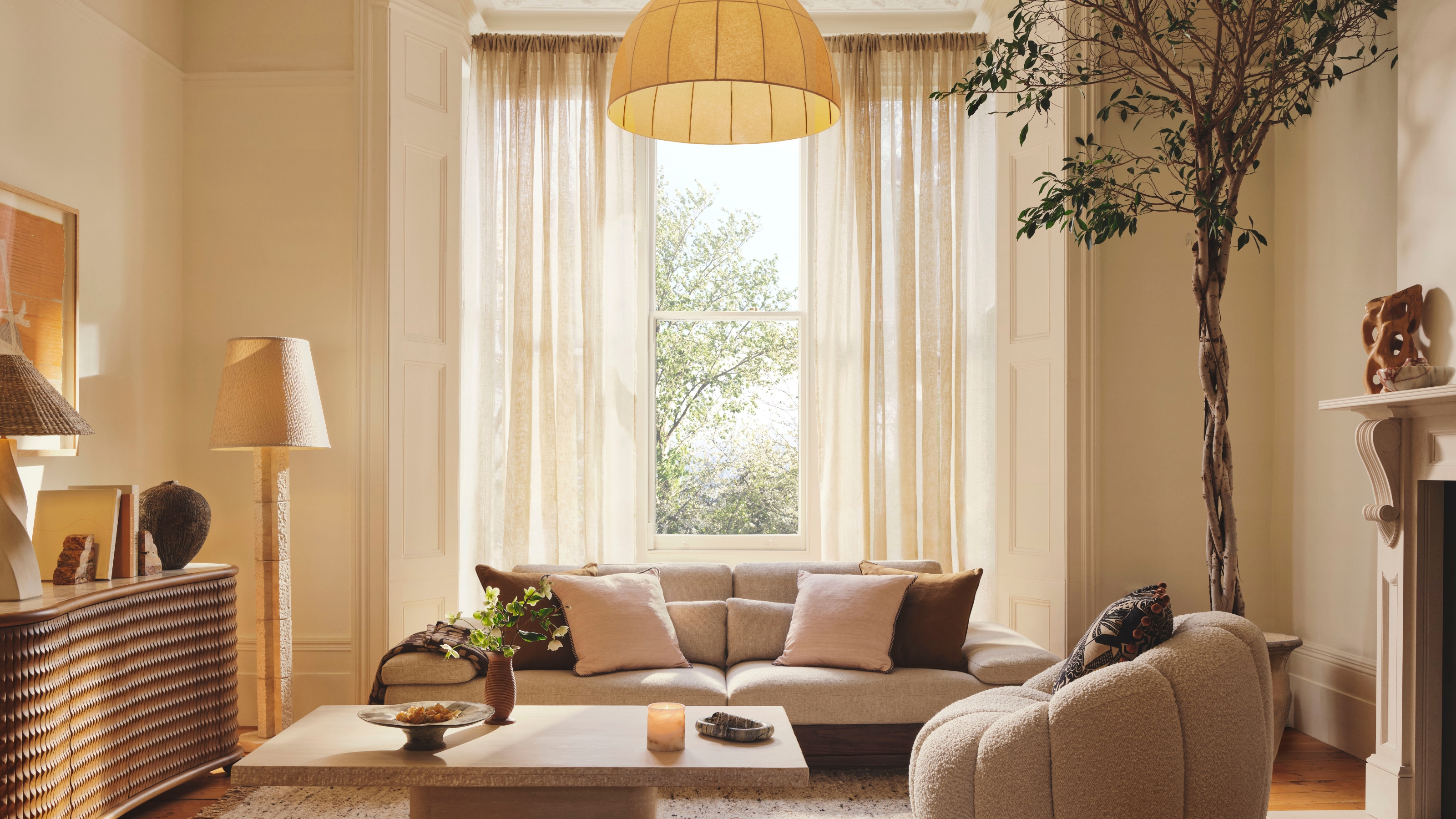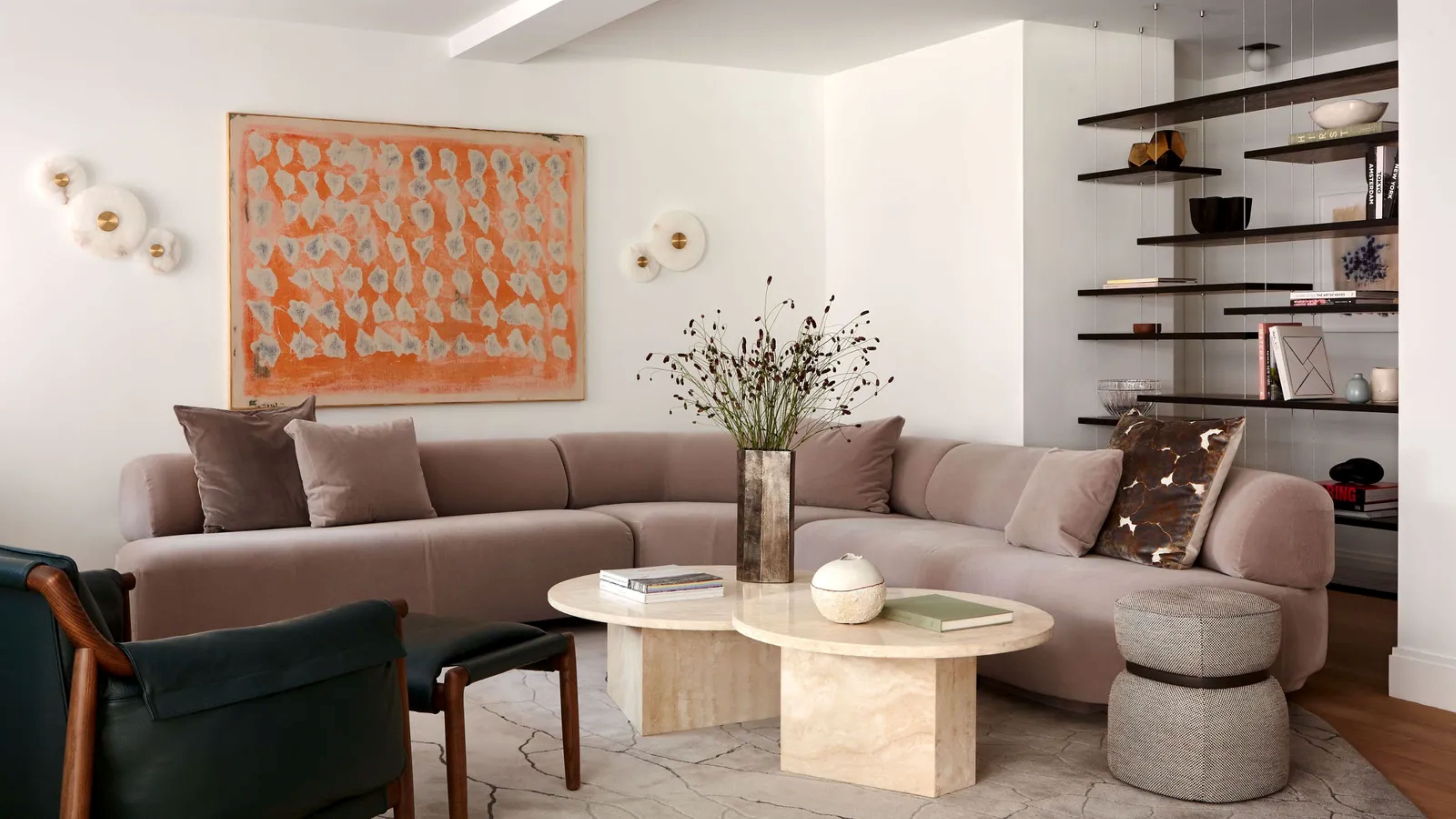3 Curtain Mistakes That Are Making Your Room Feel Smaller — Pitfalls to Avoid, and What to Do Instead
Fabric materials, the right color, whether your curtains touch the ground or not — these essential elements can make or break your drapery


Finding the perfect curtains, excitedly hanging them up, and then taking a step back and absolutely hating them is a canon event — and it's happened to the best of us. The combination of a curtain's fabric, color, and length is hard to nail down perfectly. So, if your curtains are feeling a bit lackluster in your space, there are a few mistakes that you could be making.
The reality of adding curtains to a room is that you are adding quite a bit of fabric, which, when not done correctly, can make a space feel stuffy and small — the opposite of what we want for our interiors. To construct a curtain display that is refined and sophisticated, you must understand which curtain characteristics will harmonize best with your room. What texture will look best in your space? What color will complement the paint color? These are the questions that will lead you to love your drapery rather than your drapery accidentally reducing the size of your space.
As an apartment dweller myself, I know that space comes at a premium, and wanting to follow chic curtain trends shouldn't stand in the way. The end goal is to achieve both privacy and style. I asked interior designers for the most common curtain styling mistakes that make a room look smaller, and they shared with me three specific mistakes to avoid when installing your drapery.
1. The Wrong Fabric

DO INSTEAD: This room is bright and airy, so the light, sheer material of these curtains keeps the breathability.
The most common reason curtains reduce the size of a room is down to choosing the wrong fabric. In small living room layouts, the goal is for your curtains to help draw the eye up and not diminish any height or space. Interior designer Brynn Olson, of Brynn Olson Design Group, says, "I would avoid velvet in a small, dark room, as it can create a somewhat stuffy atmosphere. Including more breathable fabrics is key to keeping a small room open and bright."
LA-based interior designer Lucie Ayres says, "A heavy velvet makes a room feel smaller not only because of its physical weight, which takes up more space, but also because the density of the fabric draws attention to a smaller space."
So what is the best fabric for curtains? A polyester fabric will have durability and resistance to wrinkling, stretching, and shrinking. Cotton or linen drapery with a slight sheerness is also a great way to brighten and open up a small room.

Brynn's love for art and design drove her to focus on a career in design, joining Nate Berkus Associates in 2008. Brynn has a degree in Interior Design from Harrington College of Design, and experience managing and designing work for commercial and private high-end residential clients and celebrities.

Currently based in Los Angeles and New York, Lucie’s style is a hybrid of soulful European meets playful Californian, she defines it as "comfortable, curated, and inspired." Lucie has a Cornell degree and her world travels influence her entire design process.
2. The Wrong Installation

DO INSTEAD: The extra-tall curtains frame the windows beautifully in this open living room. Instead of taking away from the beautiful height of the ceilings, they accentuate them.
The wrong installation includes both how you hang your curtains and the length that you choose. Lucie says, "Having drapery installed correctly can make or break your space, especially in tight quarters. Drapes that pool on the ground or are hung too low will create the illusion that the ceiling is much lower than it actually is."
Hanging curtains as high as possible and ensuring the bottom of the panels don't puddle or drag on the floor will open up the walls and ceiling, tricking your eyes into perceiving the space as larger and much more open. But should your curtains touch the floor? Yes, but Lucie says, "In a smaller space, you want the fabric of your draperies to just kiss the ground, avoid puddling altogether."
The finishing touches for your curtains are just as important as size and length when it comes to installation. Brynn says, "Make sure the hardware that's selected is substantial, not too flimsy, and can support the drapery appropriately." Once you have picked out your hardware and curtain rods and are ready to hang your curtain fabric, Lucie says, "It is an absolute must to hang the drapery rod six to ten inches above the window frame and 10 to 12 past the window on both sides." This will help frame your curtains around the window in a way that opens up the space rather than feeling awkward or taking away any height.
Brynn advises, "Opt for something simple with intentional and straight lines. Our favorite go-to is a timeless ripple fold curtain top with a traversing system. This combination keeps the curtain tops even and straight while making it easy to open and close the panels," says Brynn.
Though you may be a loyal DIY-er, Brynn says, "Hiring a professional to install the hardware at the correct length and width and to ensure the brackets are placed properly is sometimes worth it. It's important to invest in your drapery — it’s a major component of your space!"
3. The Wrong Color

DO INSTEAD: The curtains in this room are a lighter color than the walls which helps the dark room feel less heavy. Plus, the tall, straight installation pulls the eye up, enlarging the room.
I have fallen victim to a bad curtain color. I wanted to bring some color into my living room by adding a burnt orange curtain, but the dark shade ended up blocking out too much light and making the room feel caved in. Brynn says, "Only consider dark panels if the room is 'color-drenched' and your furnishings and other decor are lighter in shade." Otherwise, stick to lighter-colored drapery made from more breathable fabrics.
Brynn adds, "I love clean and crisp drapery. My go-to colors are typically ivory and white, but if you prefer a pattern or a pop of color, you can always add leading-edge trim or curtain borders."
Curtains should add sophistication and cozy elegance to your space, not weigh it down. Once you have decided on a style and fabric, take a look at the latest color trends to help you pick the best curtain color for your space.
Be The First To Know
The Livingetc newsletters are your inside source for what’s shaping interiors now - and what’s next. Discover trend forecasts, smart style ideas, and curated shopping inspiration that brings design to life. Subscribe today and stay ahead of the curve.

Olivia Wolfe is a Design Writer at Livingetc. She recently graduated from University of the Arts London, London College of Communication with a Masters Degree in Arts and Lifestyle Journalism. In her previous experience, she has worked with multiple multimedia publications in both London and the United States covering a range of culture-related topics, with an expertise in art and design. At the weekends she can be found working on her oil paintings, reading, or antique shopping at one of London's many vintage markets.
-
 Sateen vs Percale Sheets — What's the Difference, and Which Are Better?
Sateen vs Percale Sheets — What's the Difference, and Which Are Better?Who would have thought a simple weave pattern could make all the difference to your sleep
By Devin Toolen
-
 I Asked Interior Designers to Share the Worst Design Trends They've Seen on Social Media — And What They Want to See Instead
I Asked Interior Designers to Share the Worst Design Trends They've Seen on Social Media — And What They Want to See InsteadJust because something is trending, doesn't mean it's tasteful — from dupe-culture to OTT lighting, here's what designers hate seeing in homes
By Devin Toolen